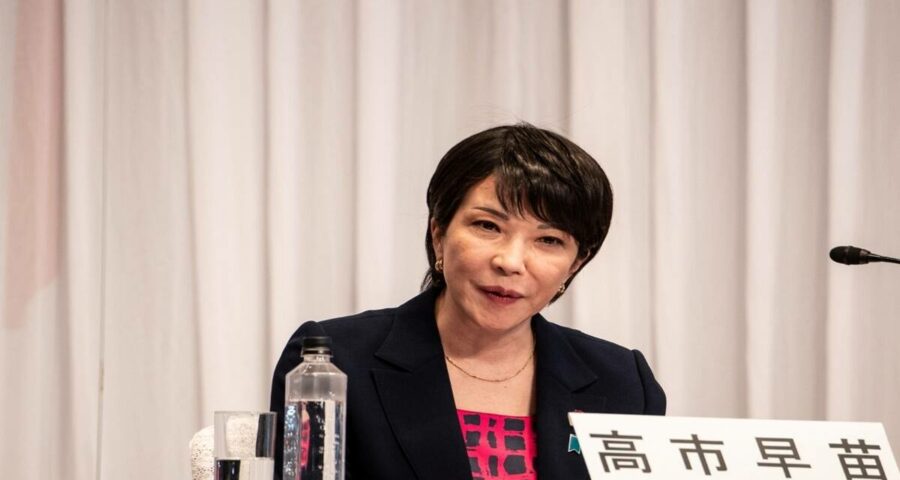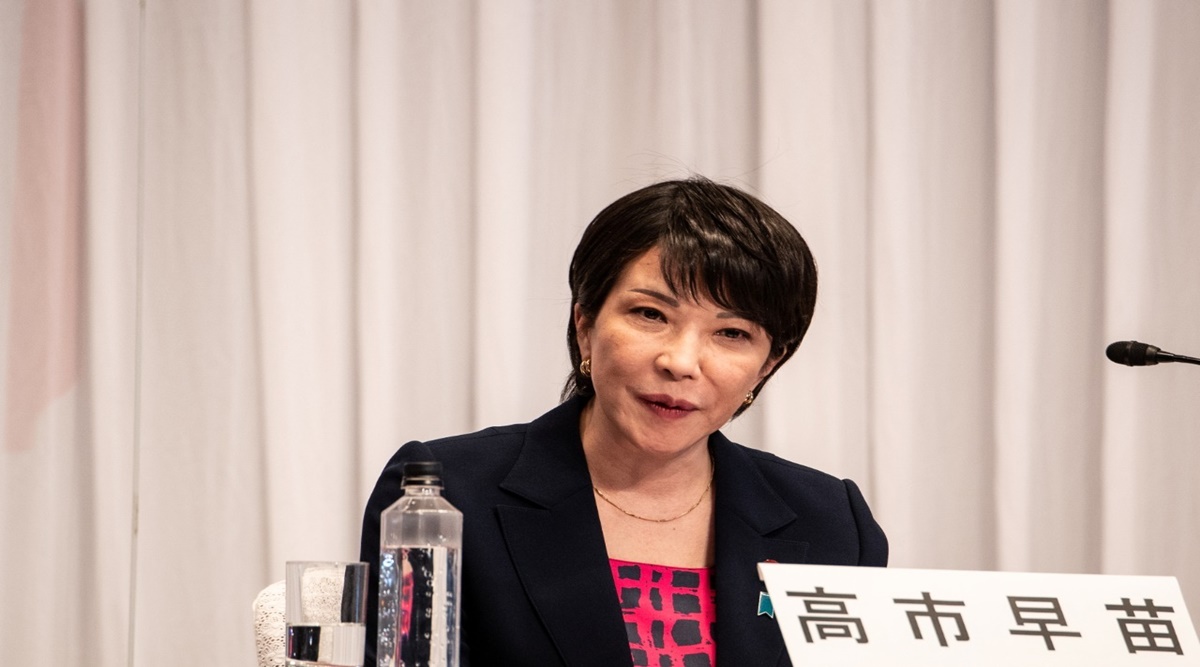Takaichi, 60, is considered a long shot. If she beats the odds, it will be a significant milestone for Japan, where women make up less than 15% of parliament and only two of the current Cabinet’s 21 ministers are female.
Written by Motoko Rich, Makiko Inoue and Hikari Hida
Shinzo Abe, Japan’s longest-serving prime minister, often talked about creating a society in which women could “shine.”
Now, a year after he resigned because of ill health, Abe is backing a woman, Sanae Takaichi, to lead the governing Liberal Democratic Party. If party members elect her this month, she will almost certainly become Japan’s first female prime minister.
Takaichi, 60, is considered a long shot. If she beats the odds, it will be a significant milestone for Japan, where women make up less than 15% of parliament and only two of the current Cabinet’s 21 ministers are female.
But Takaichi, a hard-line conservative, is a divisive figure among Japanese who advocate for women’s empowerment. She rarely talks about gender equality, and she supports some policies, such as a law requiring married couples to share a surname, that feminists say diminish women’s rights.
“For her to be up there on a pedestal as a shining example of a different, improved, changed society for Japanese women would be the worst possible thing that could happen,” said Noriko Hama, an economics professor at Doshisha University Business School in Kyoto.
The Liberal Democrats will hold their leadership vote Sept. 29. Yoshihide Suga, the unpopular current prime minister and party leader, said this month that he would step aside.
Whoever party members choose will lead the party into a general election that must be held by the end of November. The Liberal Democrats, who have governed Japan for almost all of the postwar period, are heavily favored to win that election.
Takaichi, who was first elected to parliament in 1993 from Nara prefecture in western Japan, has been a staunch ally of Abe’s since 2006, when he began his first, brief stint as prime minister, and through his return to power in 2012. Her various Cabinet portfolios included — ironically, in some feminists’ view — gender equality.
Unlike Abe, Takaichi — who did not comment for this article — has said little about the gender gap, though she has called for tax deductions for child care and support for women’s health.
On many other far-right policies, she echoes Abe. She supports amending the pacifist Constitution, a contentious position in a country wary of military aggression. In a campaign speech Friday, she vowed to “protect the national sovereignty and honor at all costs.”
Like Abe and other conservatives, Takaichi argues that Japanese atrocities during World War II have been overstated. She regularly visits Yasukuni Shrine, a memorial in Tokyo honoring Japan’s war dead — including Class A war criminals from World War II — that is a flashpoint for historical sensitivities in China and South Korea.
Takaichi opposes same-sex marriage and legal changes that would allow women to reign as emperor. And she opposes changing the century-old law requiring married couples to share a surname for legal purposes, an issue often seen as a litmus test among conservative power brokers.
She has said that revising the law could lead to divorce or extramarital affairs. Takaichi, who is divorced, used her birth surname professionally during her marriage.
Political analysts say Abe, who still wields considerable influence in the party, has calculated that Takaichi’s gender will overshadow her lack of policies supporting women. “Abe is just pretending to respect and proactively promote women,” said Naoto Nonaka, a professor of politics at Gakushuin University in Tokyo.
Abe is widely seen as having fallen short on his promises to advance women in society. In the World Economic Forum’s annual analysis of gender gaps, Japan, which has the world’s third-largest economy, ranks 120th out of 156 countries.
Women still struggle to gain traction in Japanese politics, particularly at the national level. Yuriko Koike, the governor of Tokyo, founded a party in 2017 in an attempt to disrupt a national election that year, but Abe led the Liberal Democrats to victory, while Koike’s party drew only lukewarm support.
Another woman in the Liberal Democrats’ leadership race, Seiko Noda, 61, has explicitly promoted gender equality. But she barely secured enough signatures from party lawmakers to qualify as a candidate.
Political analysts said women in particular had to tack right to rise in the Liberal Democratic party. “In order to compensate for this disadvantage of being a woman, you have to show overloyalty to the conservatives,” said Mari Miura, a professor of political science at Sophia University in Tokyo. “And that means you have to be hawkish and anti-feminist.”
Gender aside, Takaichi is an unusual leadership candidate because she does not come from a prominent political family. The top contenders — Taro Kono, 58, and Fumio Kishida, 64 — are both sons and grandsons of members of parliament. Abe’s grandfather was also a prime minister.
Takaichi’s mother was a police officer in Nara, and her father worked for a car company affiliated with Toyota. In a memoir, Takaichi wrote that she had been admitted to two prominent private universities, Waseda and Keio, but that her parents wanted to save the tuition money for her younger brother.
Instead, she attended Kobe University, a state school, where she played drums in a band and drove a motorcycle. After graduation, she spent a year in the United States, interning with then-Congresswoman Patricia Schroeder of Colorado, a Democrat.
“I was amazed that she was so interested in how the US government worked,” Schroeder wrote in an email. “A lot of Americans aren’t interested in that! She was very dedicated and dug into any project she was given.”
Takaichi, who often cites Margaret Thatcher as a role model, decided her best path to power was to align with Abe. “Her candidacy became viable in a way that it wouldn’t have been without” him, said Tobias Harris, a senior fellow at the Center for American Progress in Washington.
She has even unveiled an economic platform that she calls “Sanaenomics,” an obvious reference to Abe’s so-called Abenomics. It includes monetary easing and strong fiscal investment, two principles that he promoted.
Takaichi raised eyebrows in 2014 when she posed for photos with Kazunari Yamada, a Holocaust denier who leads the fringe National Socialist Japanese Workers party. Years earlier, she had endorsed a book by a Liberal Democrat that praised Hitler’s campaign tactics.
Taku Yamamoto, Takaichi’s ex-husband and a fellow lawmaker in the party, said a photograph was not a sign of an alliance. “We politicians accept anyone who wants to take a picture with us,” he said, adding, “I have had my photo taken with members of the Communist Party.”
References to Nazi Germany are not as politically explosive in Japan and other Asian countries as they can be in the West. “The issue seems very distant in Japan regarding the Holocaust,” said Kiyoka Tokumasu, 20, a student studying education and international affairs at International Christian University in Tokyo.
Tokumasu said she knew little about Takaichi’s positions but would welcome a female prime minister.
“Hopefully, while she’s in her role, we can influence her to support more laws and ideologies that create a more gender-equal world,” Tokumasu said.
Source: Read Full Article


